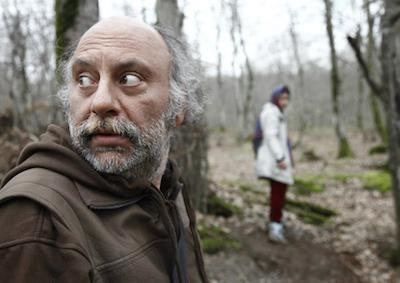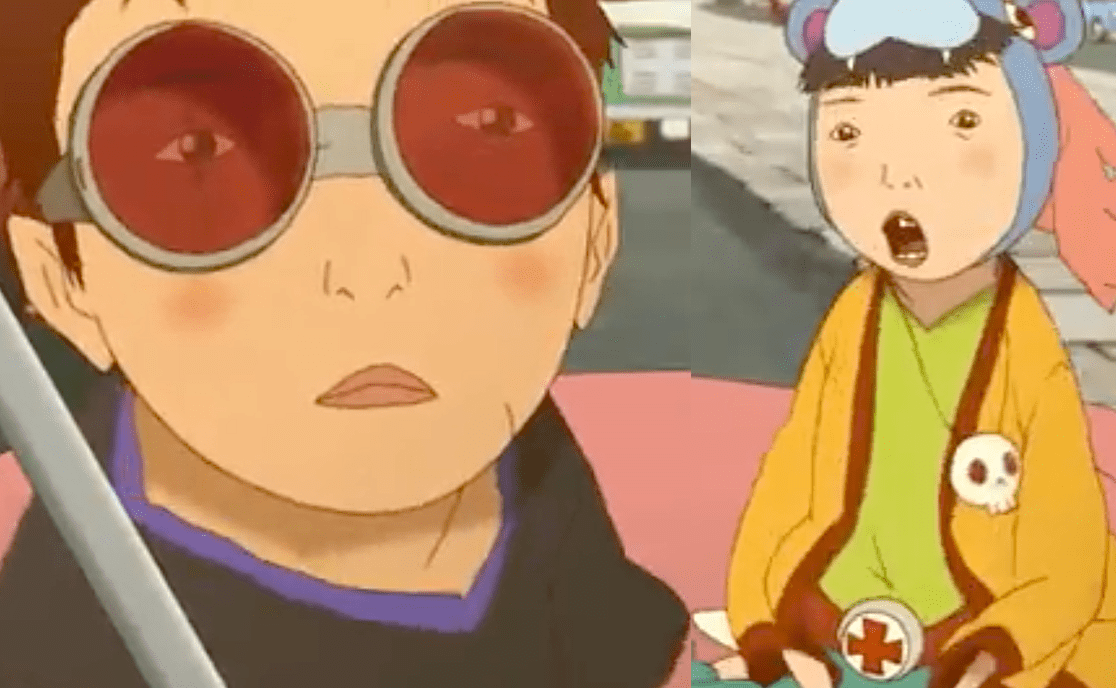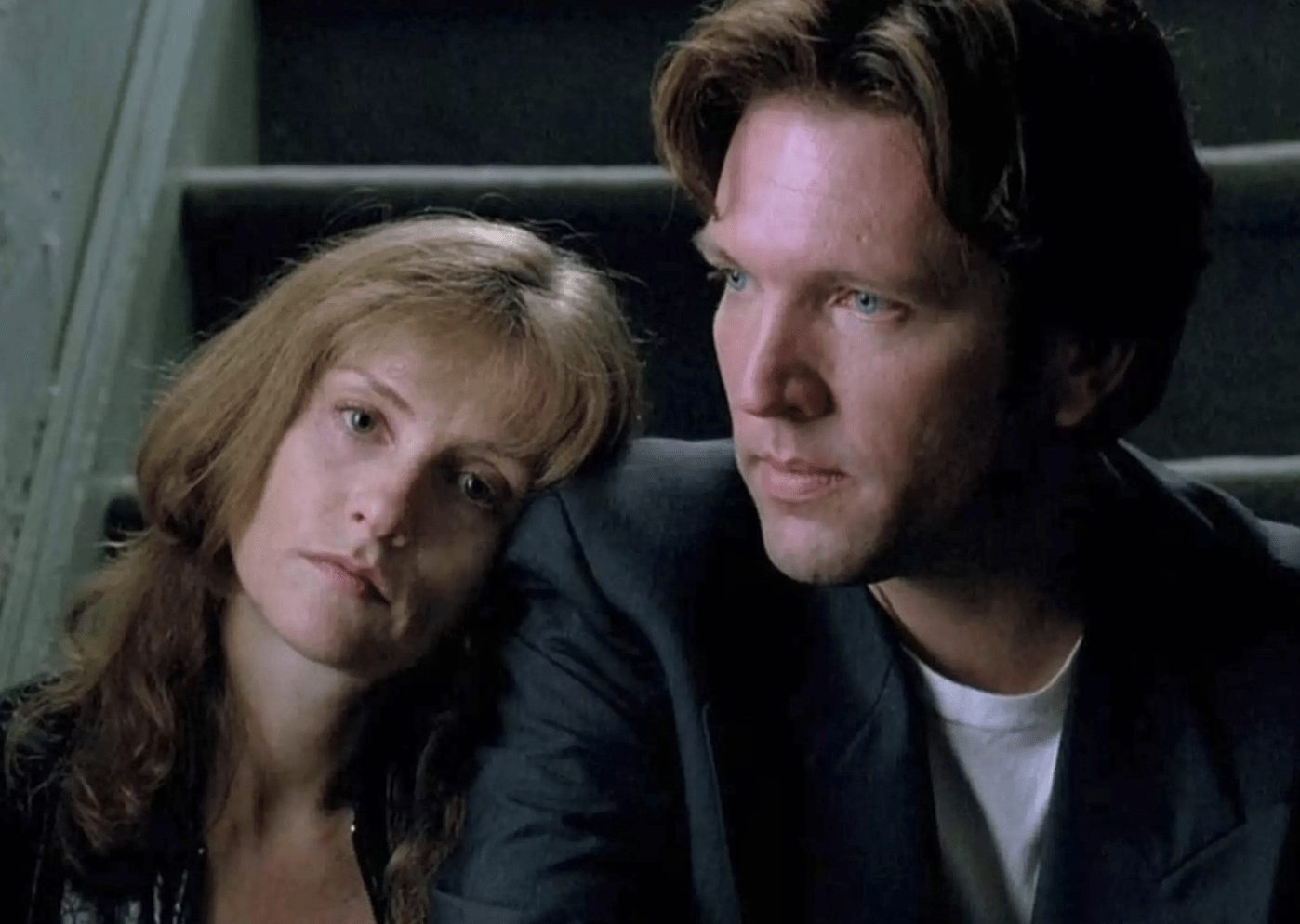
Niles Atallah’s 2017 film Rey is a cascade of associations and references. The premise and plot are simple. It is a decent into madness, road movie about a European “explorer” looking to found his own kingdom somewhere near Chile. That is where the simplicity ends. The structure of the film is complex and tangled and allows the film to touch on many other ideas and subjects.
With a deranged European marching his way through the jungles of The New World the first association is Agurrie The Wrath of God and Heart of Darkness. Both Agurrie and Atalah’s man character, Orélie-Antoine de Tounens, are pathological narcissists but they are not the same. Even with his boundless ambition driving him mad Agurrie is still practical. He keeps finding a way forward. No matter what the challenge is, he faces it with confidence and drags his men through it. Tounens is further over the deep end. He believes he is a messiah fulfilling his destiny. He wears a crown that looks quite a bit like a crown of thorns, and sort of dreams his way through the landscape believing his ascendance is inevitable.
There are multiple references to the bible, Jesus and Moses in Rey. The bible’s role in the invasion of the New World was in itself a shared delusion of grandeur that allowed the Europeans to believe themselves benevolent. Christianity was a fantasy they used to hide their base motivations from themselves.
This twisted thought process is evident in Tounens and feels very similar to the thought process exhibited by Cabeza de Vaca as written in his diary Adventures in the Unknown Interior of America. Both Cabeza de Vaca and Orélie-Antoine de Tounens were real historical figures. Tounens invaded Chile and Cabeza de Vaca invaded Northern America. Cabeza de Vaca wandered all over bringing death and disease to many of the indigenous people. The connection between his presence and the coming of disease seems to have eluded both the tribespeople and Cabeza de Vaca himself. Ironically what they all saw were his miraculous healing powers as a medicine man. He was able to treat the people he sickened and save some of them. He too, like Agurrie, and Tounens, thought he was somehow special and guided by god.
Rey also seems to reference Johnathon Swift’s Houyhnhnms Island from Gulliver’s Travels. Houyhnhnms is a utopia inhabited by super intelligent horses. Tounens is followed by two acolytes that have human bodies and horses heads. When Tounens establishes his kingdom in paradise it apparently for them. There is also a scene where Tounens stumbles across a severed horse head hanging from a tree. This symbol along with repeated mentions of flies evokes William Golding’s Lord of Flies.
The slow decent into madness that Herzog depicts in Agurrie The Wrath of God is subtle compared to how Atallah choses to illustrate Touonens’ decline. Atallah does not write more dramatic scenes or have characters recite deranged soliloquies but the physical appearance of the actual film stock is progressively degraded. Its not entirely clear which techniques he used to distress it but there are color changes, holes, blotches, scratches and dust particles that all create a physical metaphor for not only madness but also the tenuous nature of memory.

It is surprising that Atallah can degrade the film stock so severely and still maintain a connection to the narrative depicted in it. The appearance of sprocket holes, and blotches do not disrupt the viewer’s ability to stay emerged in the action. They add a layer of atmosphere that helps explain what we are watching is not a record of what happened but an unreliable version being recounted by a character. In this way Rey is very much like Rashomon.
The film takes place at a tribunal or court. Just as in Rashomon, we are presented with conflicting versions of the same scenes. There is an ironic moment when a Sancho Panza type character named Rosales testifies that he “Remember[s] it clearly” and then immediately the film cuts to distressed footage.
The court’s officers and officials are all dressed in paper mache masks. This prevents the court scenes from being seen as the one reliable or true reality. By the end of the film the narrative falls away and the screen is filled with psychedelic, kaleidoscopic, and fractal designs. The complete abstraction is not a problem but the choice of kaleidoscopic visuals just feels very 1960’s.
Overall the film negotiates the balance of formalism with narrative very well. The symbolism and visual disturbances help to open up the story. People’s differing points of view seem even more idiosyncratic. Rey presents a snarl of impressions, memories, fantasy and reality that can not be disentangled. In fact the implication is that it is only through embracing all of it that you may come to understand it.

If you enjoyed this article click here for more
www.filmofileshideout.com/archives/carlos-reygadass-japon



